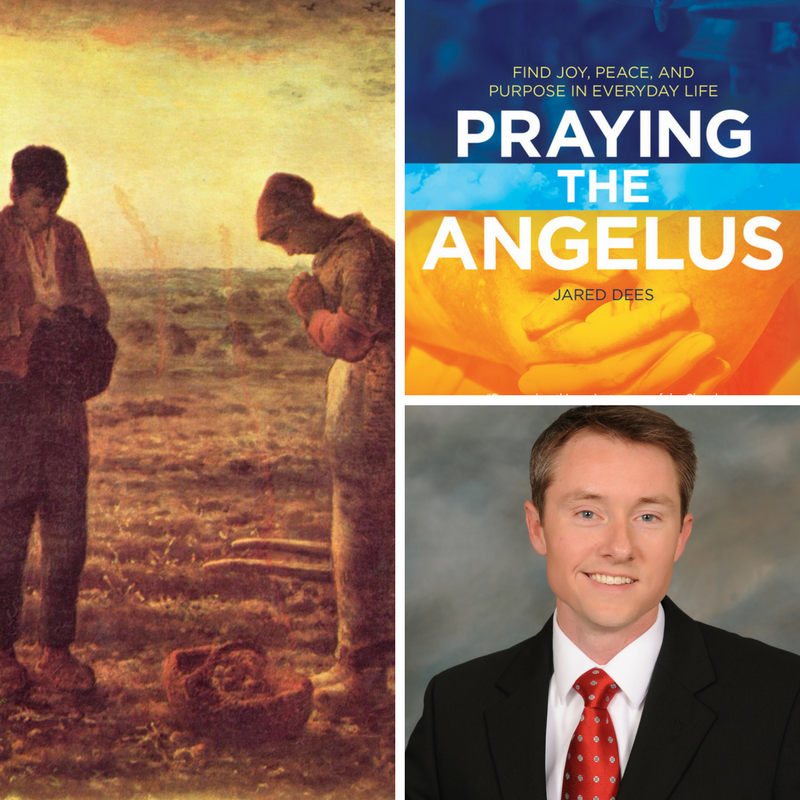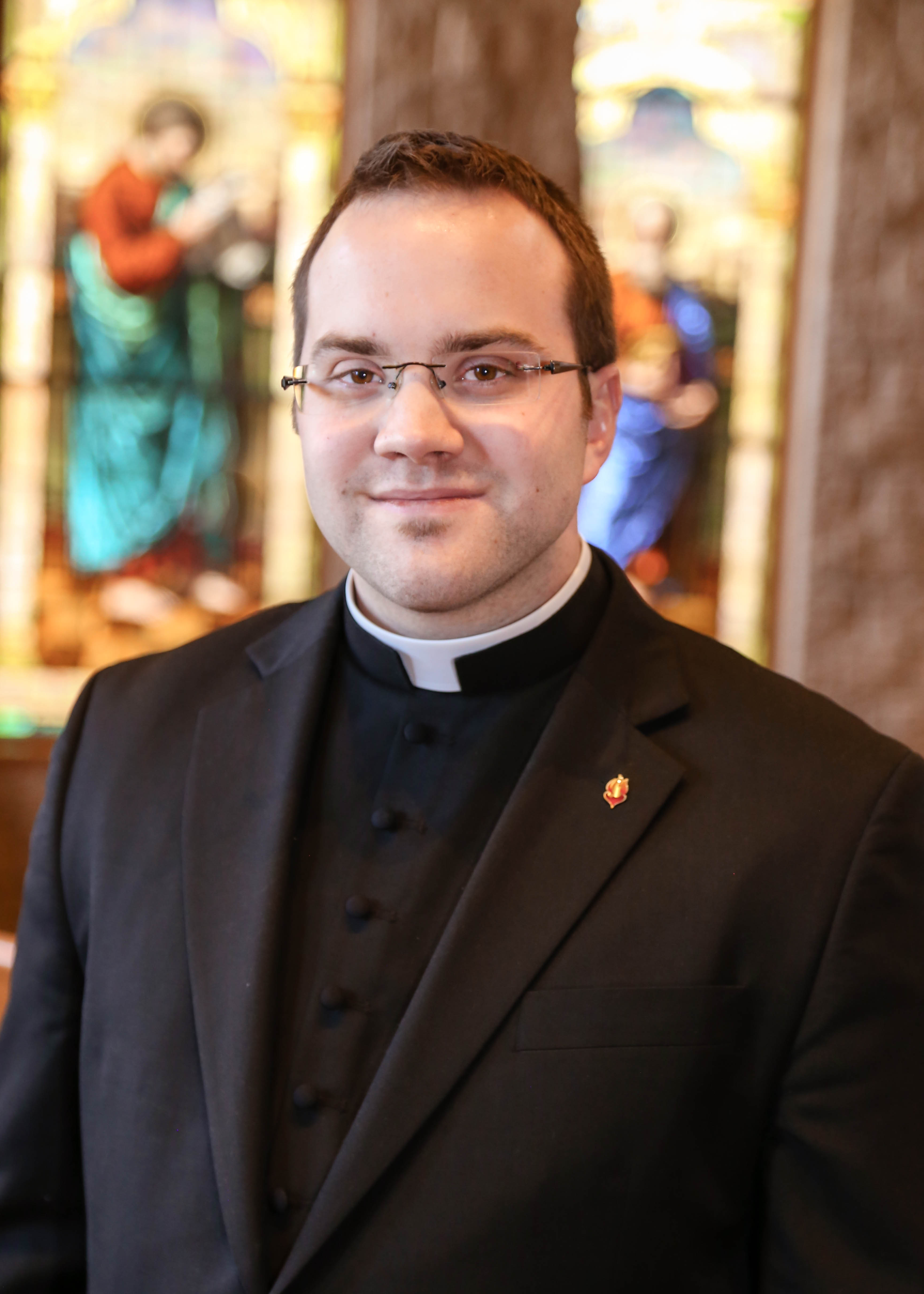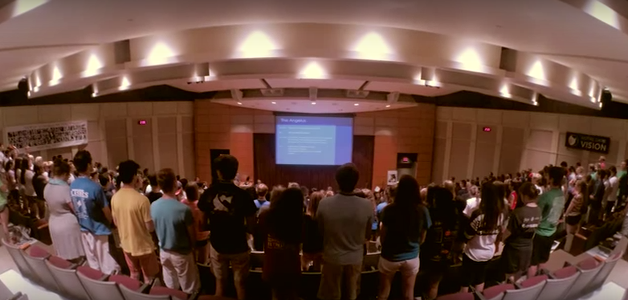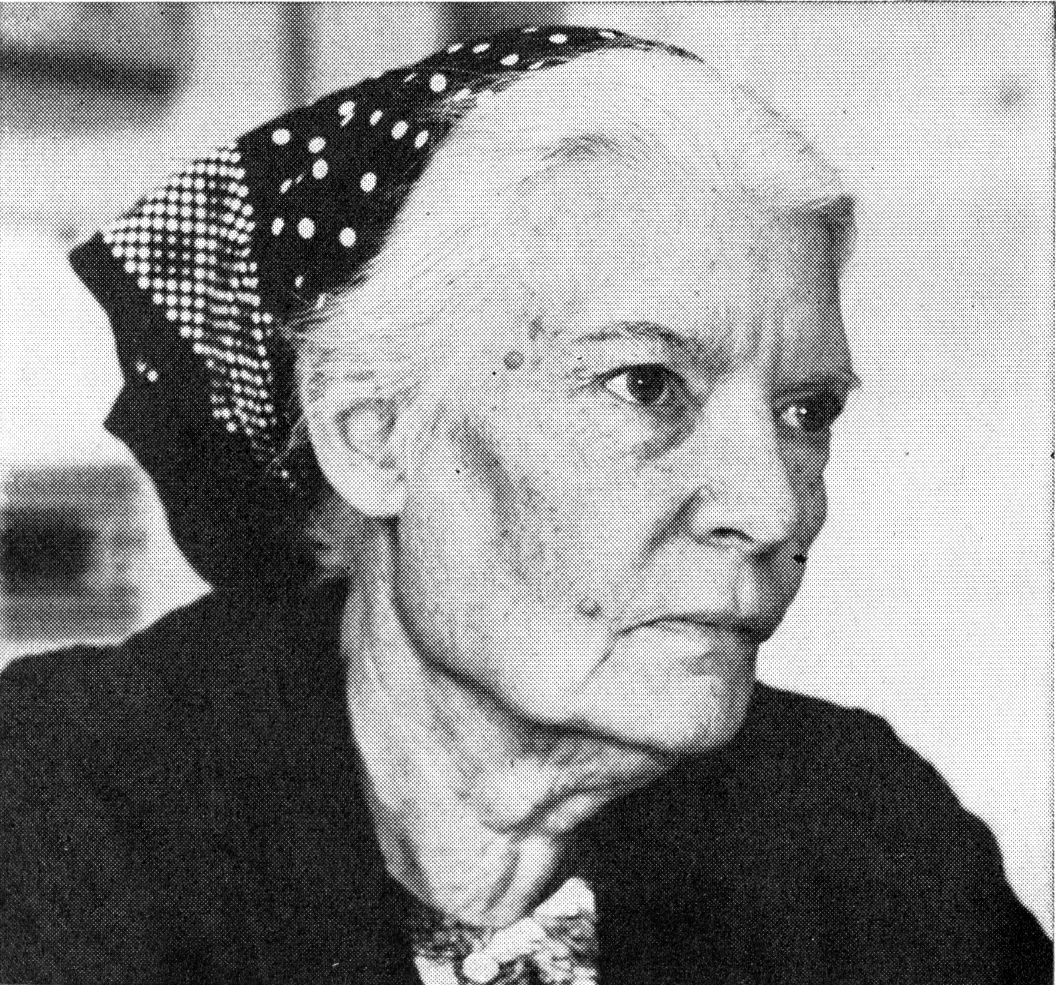
My new book, Praying the Angelus: Find Joy, Peace, and Purpose in Everyday Life, is now officially on sale. Find it on Amazon or wherever books are sold.
Here’s what I find to be most interesting about Catholic devotions like the Rosary, novenas, and the Angelus: they are passed on from one person to another.
This may not be some profound revelation. Maybe it is obvious to you, but the implications are extremely important.
The way you pray today was influenced by others. Your prayer life was inspired by the prayer lives of others. You heard about a devotion or someone invited you to do it yourself and now whether years or days later, you have made it your own.
The Angelus has changed my life. I won’t presume to know if it will change your life, but I think it will. I can’t tell you how God will touch your life through this prayer, but I can say this: God has deeply touched my heart through the daily practice of this prayer and I think he can do the same for you if you take some small time out of your day to try it.
So, this is no article on “Why YOU should pray the Angelus.” Frankly, I don’t know what God has in store for you through this devotion.
What I will do is share why I pray the Angelus. I hope it convinces you to give it a try too.
(To read a much deeper history and background to the prayer and to reflect on the words of the devotion with many short meditations, I hope you will check out the book, Praying the Angelus.)
I pray the Angelus because someone invited me to do it.
In all honesty, this is the simplest answer. I pray the Angelus because of an invitation from Fr. Terry.
Before that invitation, I had barely known about the prayer. Only a century earlier, nearly every Catholic would have prayed the Angelus every single day. Still churches ring bells calling us to pray the Angelus, yet so few of us today heed the call.
The fix to that problem is very, very simple. All it takes is an invitation.
Fr. Terry invited me and my 3rd grace catechesis class to pray the Angelus one Advent season and so we did. I made it a part of my daily routine. Then I invited my wife to pray it with me. Later we included our kids in the devotion. We’ve prayed it with friends and family.
Now, I extend that invitation to you.
(Visit TheAngelusPrayer.com for more information and to get the text for the prayer.)
I pray the Angelus because it unites our family together.
When I first started praying the Angelus, I tried to make it my own personal devotion. Big mistake.
I was (I am embarrassed to say) afraid to share the devotion from my wife. I didn’t think she would want to pray something so Catholic and so routine with me (which, of course, was absurd). I can’t tell you how grateful I am to have gotten over that fear of sharing this prayer with her. It has become an important part of our morning and evening routines at home.
I always used to wonder how Catholic married couples prayed with each other. Here is a very simple devotion for couples to share together.
Later on, we started praying it with our kids too. To be honest, it is the first Catholic devotion that we are able to get about a 100% participation. We have tried–unsuccessfully like many families–to establish a Sunday evening Rosary routine. The beads often distract everyone from really paying attention. The Angelus, however, is short and it doesn’t take long for the kids to memorize their parts.
(Side note: During Easter, Catholics pray the Regina Caeli instead of the Angelus. You should see the joy on children’s faces when proclaiming “Alleluia!” during this Easter devotion.)
Now our kids are praying it at school each day and recently, for the first time, they started asking if they could lead the prayer instead of me. I was one very proud father!
I pray the Angelus because it reminds me why I am here.
As a devotion that we practice at specific times each day ( 6:00 a.m, noon, 6:00 p.m.), I always have something I feel is important going on when it comes time to pray. I always want to push through something I’m writing or doing. I can always try to justify in some way why I could just put off the prayer until later later.
That’s the beauty of this devotion. You have to stop whatever you are doing and pray. That puts into context what you are doing with your time. You realize that everything we have, especially our time, is a gift from God. You realize that he visits us in unexpected ways (like the angel and Mary) and that he dwells among us wherever we are.
We cannot hide anything from God. There is nothing that we do with our time that isn’t fully his gift. He wants to be present in everything we do. The Angelus is a daily reminder of that. I stop, pray, and realize that even in the article, book, worksheet, workshop, or email I’m writing, he is here. He is present and I am here to serve him alone.
I pray the Angelus because the words stick with me throughout the day.
One of the biggest hurdles I needed to get over in adding this devotion to my life, was a shallow understanding of memorized prayers as a Catholic.
As someone who spent a lot of time in Protestant churches growing up, I always felt that spontaneous prayer said with emotion was superior to those rote, memorized prayers that we said as Catholics.
Boy was I wrong.
The prayers we pray repeatedly, like the Angelus, program our minds for a spiritual purpose. By praying these words again and again, they start to echo in our minds throughout our day.
By praying the Angelus, for example, I started to:
- recognize the “Angelus moments” in my day where I had the unexpected opportunity to be a servant (handmaid) to others.
- accept each new challenge or obstacle in my days as an opportunity to repeat Mary’s words: “be it done unto me according to thy word.”
- to realize that the Word was present everywhere I went and not just in sacred spaces.
The words stick with you when you pray them constantly. They open your eyes to seeing the world very differently.
I pray the Angelus because it keeps me humble.
Surprised by an angel, Mary had to change whatever plans she had in place before the Annunciation. She was a humble servant of the Lord open to his will becoming a reality in her life. Through her “yes,” the Word was made flesh and God dwelt among us, taking human form. We turn to her in prayer because we desperately need the grace from God to be made worthy of Christ’s promises.
How can you pray the Angelus and not become a humble servant like Mary–Mary and all of the saints?
Think about that word “Behold!” from the second stanza of the prayer. It is a word that should announce something or someone grand and majestic, yet the word is used to point not to a queen but to a handmaid, a servant. This is because through this dedication to humble service, we are open to God’s grace in our lives.
The Regina Caeli takes its name from the opening lines of the prayer, “Queen of heaven, rejoice! Alleluia!”
How did Mary become queen? She first was a handmaid.
It was a true Cinderella story and one that we can follow too.
Why Will You Pray the Angelus?
This is my invitation: pray the Angelus with me.
Unite with me and thousands, if not millions, who pray the Angelus each day. Find out why God is calling you to make this devotion your own and something to be shared among friends and family.
If this devotion is new to you, then check out the resources at TheAngelusPrayer.com.
Or, I hope you will enjoy reading and praying with the book, Praying the Angelus. It offers an introduction to the prayer and a guide to making it your own. The meditations will help you reflect on each phrase of the prayer and, I hope, go deeper into your encounter with Christ.
The Angelus
V. The Angel of the Lord declared unto Mary.
R. And she conceived of the Holy Spirit.
Hail Mary, full of grace,
The Lord is with Thee;
Blessed art thou among women,
And blessed is the fruit of thy womb, Jesus.
Holy Mary, Mother of God,
Pray for us sinners,
Now and at the hour of our death. Amen
V. Behold the handmaid of the Lord.
R. Be it done to me according to thy word.
Hail Mary. . .
V. And the Word was made flesh.
R. And dwelt among us.
Hail Mary. . .
V. Pray for us, O holy Mother of God.
R. That we may be made worthy of the promises of Christ.
Let us pray: Pour forth, we beseech Thee, O Lord, Thy grace into our hearts, that we to whom the Incarnation of Christ Thy Son was made known by the message of an angel, may by His Passion and Cross be brought to the glory of His Resurrection. Through the same Christ Our Lord. Amen.

 Sr. Anne Flanagan, FSP is a Catholic sister (nun) of the Daughters of St. Paul, an international community founded in 1915 for evangelization in the world of communication. She is a singer, writer, and speaker for Pauline Books & Media (US). She is currently working on various digital projects for her community and its publishing ministry.
Sr. Anne Flanagan, FSP is a Catholic sister (nun) of the Daughters of St. Paul, an international community founded in 1915 for evangelization in the world of communication. She is a singer, writer, and speaker for Pauline Books & Media (US). She is currently working on various digital projects for her community and its publishing ministry.














